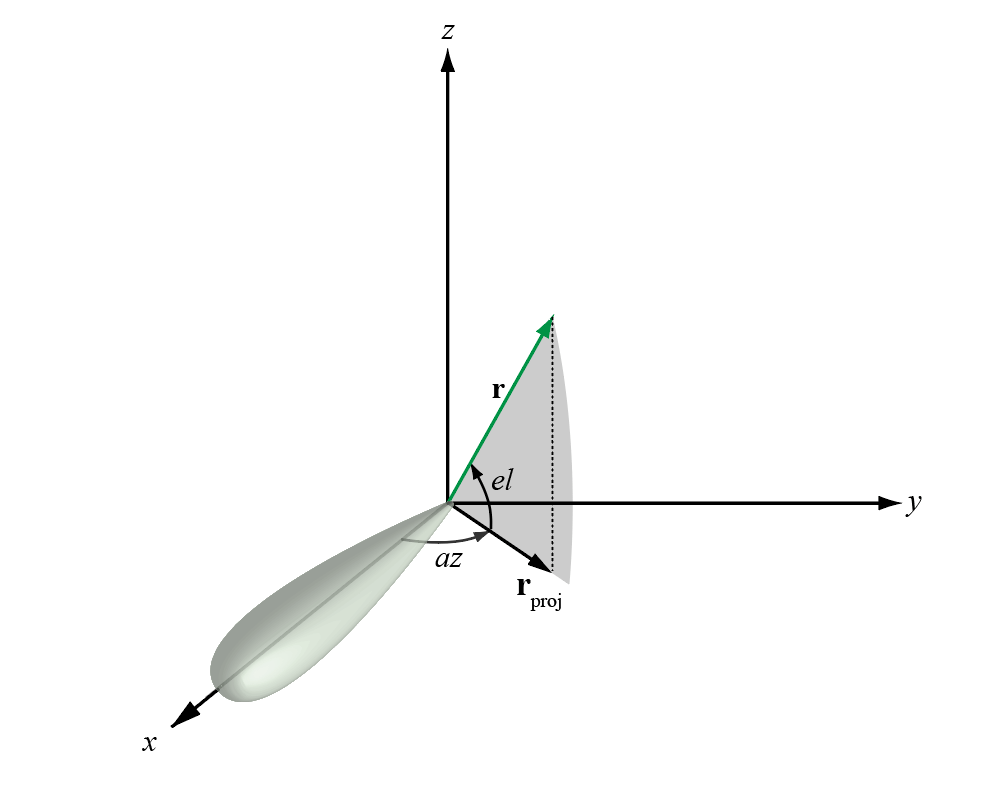azel2phithetapat
将辐射模式从方位和高度coordinates to phi-theta coordinates
Syntax
Description
pat_phitheta= azel2phithetapat(pat_azel,az,el)pat_azel, from azimuth and elevation coordinates to the pattern,pat_phitheta, in phi and theta coordinates.azandelare the azimuth and elevation angles at which thepat_azelvalues are defined. Thepat_phithetamatrix covers theta values from 0 to 180 degrees and phi values from 0 to 360 degrees in one degree increments. The function interpolates thepat_azelmatrix to estimate the response of the antenna in a given phi-theta direction.
pat_phitheta= azel2phithetapat(___,'RotateZ2X',rotpatax)rotpataxto indicate the boresight direction of the pattern along thex-axis or thez-axis.
[also returns vectorspat_phitheta,phi_pat,theta_pat] = azel2phithetapat(___)phi_patandtheta_patcontaining the phi and theta angles at whichpat_phithetais sampled.







